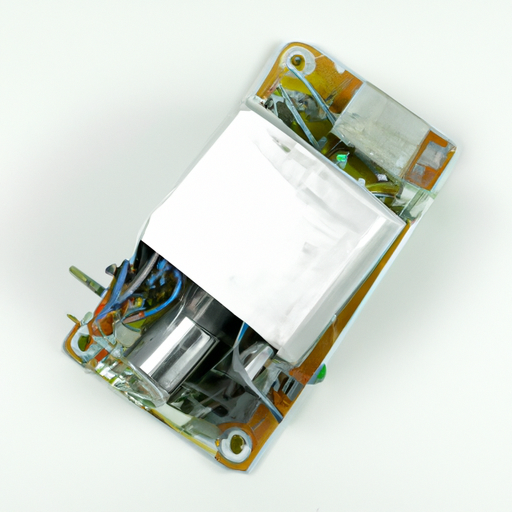
Signal converters are essential components in various industries, allowing for the seamless conversion of signals from one form to another. These devices play a crucial role in ensuring the compatibility and efficiency of different systems and equipment. In this article, we will explore the top 10 signal converter popular models in the mainstream.1. ADI AD5755-1: The AD5755-1 from Analog Devices is a high-performance signal converter that offers precision and reliability. It features a 16-bit digital-to-analog converter (DAC) and can be used in a wide range of applications, including industrial automation and process control.2. TI DAC9881: The DAC9881 from Texas Instruments is a versatile signal converter that provides high-resolution analog output. It is ideal for applications that require precise control and monitoring, such as medical devices and test equipment.3. Maxim MAX11210: The MAX11210 from Maxim Integrated is a low-power, high-precision analog-to-digital converter (ADC) that is widely used in industrial and automotive applications. It offers excellent performance and reliability, making it a popular choice among engineers and designers.4. ADI AD5421: The AD5421 from Analog Devices is a high-performance digital-to-analog converter that is commonly used in industrial control systems and instrumentation. It offers high accuracy and stability, making it ideal for demanding applications.5. TI DAC8568: The DAC8568 from Texas Instruments is a high-speed, high-precision digital-to-analog converter that is widely used in communication and test equipment. It offers excellent performance and reliability, making it a popular choice among engineers and designers.6. Maxim MAX5216: The MAX5216 from Maxim Integrated is a low-power, high-precision digital-to-analog converter that is commonly used in industrial automation and process control. It offers excellent performance and reliability, making it a popular choice among engineers and designers.7. ADI AD5750: The AD5750 from Analog Devices is a high-performance signal converter that offers precision and reliability. It features a 16-bit digital-to-analog converter (DAC) and can be used in a wide range of applications, including industrial automation and process control.8. TI DAC8830: The DAC8830 from Texas Instruments is a versatile signal converter that provides high-resolution analog output. It is ideal for applications that require precise control and monitoring, such as medical devices and test equipment.9. Maxim MAX11210: The MAX11210 from Maxim Integrated is a low-power, high-precision analog-to-digital converter (ADC) that is widely used in industrial and automotive applications. It offers excellent performance and reliability, making it a popular choice among engineers and designers.10. ADI AD5421: The AD5421 from Analog Devices is a high-performance digital-to-analog converter that is commonly used in industrial control systems and instrumentation. It offers high accuracy and stability, making it ideal for demanding applications.In conclusion, signal converters play a crucial role in various industries, enabling the seamless conversion of signals from one form to another. The top 10 signal converter popular models in the mainstream offer high performance, reliability, and precision, making them essential components in modern systems and equipment. Whether used in industrial automation, communication, or test equipment, these signal converters are trusted by engineers and designers for their excellent performance and versatility.
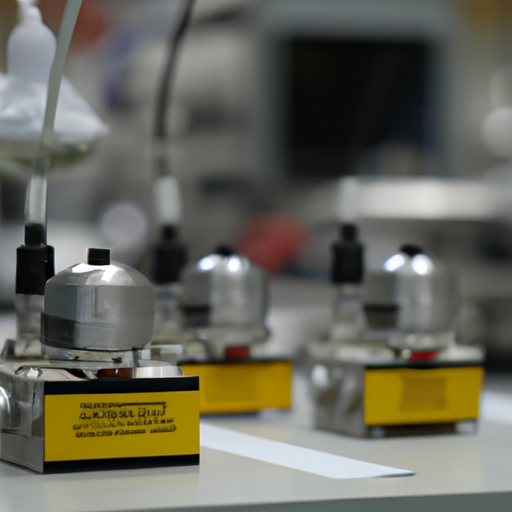
Signal converters are essential components in various electronic devices and systems, as they play a crucial role in converting one type of signal into another. This conversion process is necessary to ensure compatibility between different devices and to enable the transmission of information effectively. In this article, we will explore the mainstream production process of signal converters, including the key steps involved and the technologies used.The production process of signal converters typically involves several key steps, starting from the design phase and ending with the testing and quality control of the final product. Each step in the production process is crucial to ensure the performance, reliability, and quality of the signal converter. Let's take a closer look at the main stages of the production process:1. Design and Development: The first step in the production process of signal converters is the design and development phase. During this stage, engineers and designers work together to create a detailed design of the signal converter, taking into account the specific requirements and specifications of the device or system it will be used in. This phase involves selecting the appropriate components, determining the circuit layout, and optimizing the design for performance and efficiency.2. Component Procurement: Once the design is finalized, the next step is to procure the necessary components for the signal converter. This involves sourcing electronic components such as resistors, capacitors, transistors, and integrated circuits from suppliers. It is essential to ensure that the components meet the required specifications and quality standards to ensure the reliability and performance of the signal converter.3. PCB Assembly: The next step in the production process is the assembly of the printed circuit board (PCB) for the signal converter. The PCB is the backbone of the device, providing the necessary connections between the components and ensuring the proper functioning of the circuit. The components are soldered onto the PCB using automated assembly machines or manual soldering techniques, depending on the complexity of the design.4. Testing and Calibration: Once the PCB assembly is complete, the signal converter undergoes rigorous testing and calibration to ensure that it meets the required performance specifications. This involves testing the device under various operating conditions, such as temperature, voltage, and frequency, to verify its functionality and accuracy. Any deviations from the specifications are identified and corrected during this stage.5. Enclosure and Packaging: After the signal converter has passed the testing and calibration phase, it is then enclosed in a protective casing and packaged for shipment. The enclosure not only protects the device from external elements but also provides a professional and aesthetically pleasing appearance. The packaging is designed to ensure the safe transportation and handling of the signal converter during shipping and storage.6. Quality Control and Assurance: Throughout the production process, quality control and assurance measures are implemented to ensure the reliability and performance of the signal converter. This includes regular inspections, testing, and audits to identify any defects or issues that may affect the quality of the product. Quality control measures are essential to maintain the reputation of the manufacturer and ensure customer satisfaction.7. Final Inspection and Certification: Before the signal converter is released for sale, it undergoes a final inspection and certification process to verify that it meets the required standards and specifications. This involves conducting a series of tests and checks to ensure that the device functions correctly and complies with industry regulations and standards. Once the signal converter has been certified, it is ready to be shipped to customers.In conclusion, the production process of signal converters involves several key steps, from design and development to testing and quality control. Each stage in the production process is essential to ensure the performance, reliability, and quality of the signal converter. By following a systematic and rigorous production process, manufacturers can produce high-quality signal converters that meet the needs of various electronic devices and systems.
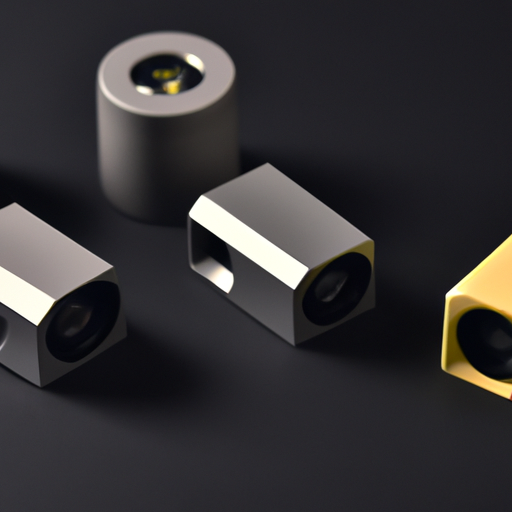
Adjustable sensor products have become increasingly popular in various industries due to their versatility and flexibility. These sensors can be easily adjusted to meet specific requirements, making them ideal for a wide range of applications. In this article, we will explore the advantages of adjustable sensor products and how they can benefit businesses and consumers alike.One of the main advantages of adjustable sensor products is their ability to be customized to fit specific needs. Traditional sensors are often limited in their capabilities and may not be suitable for all applications. Adjustable sensors, on the other hand, can be easily modified to meet the requirements of a particular project or task. This flexibility allows businesses to use the same sensor for multiple applications, saving time and money in the long run.Another advantage of adjustable sensor products is their ease of installation and maintenance. These sensors are designed to be user-friendly, with simple adjustment mechanisms that make it easy to set up and calibrate. This means that businesses can quickly integrate adjustable sensors into their existing systems without the need for specialized training or expertise. Additionally, adjustable sensors are often more durable and reliable than traditional sensors, reducing the need for frequent maintenance and repairs.Adjustable sensor products also offer improved accuracy and precision compared to traditional sensors. By allowing users to fine-tune the sensor settings, adjustable sensors can provide more accurate and reliable data. This is particularly important in industries where precise measurements are critical, such as manufacturing, healthcare, and environmental monitoring. With adjustable sensors, businesses can ensure that they are getting the most accurate and reliable data possible, leading to better decision-making and improved outcomes.In addition to their accuracy and precision, adjustable sensor products are also more cost-effective than traditional sensors. Because adjustable sensors can be customized to fit specific needs, businesses can avoid the expense of purchasing multiple sensors for different applications. This not only saves money on upfront costs but also reduces ongoing maintenance and calibration expenses. By investing in adjustable sensor products, businesses can achieve a higher return on investment and improve their overall efficiency and productivity.Furthermore, adjustable sensor products are often more versatile than traditional sensors, making them suitable for a wide range of applications. Whether it's monitoring temperature, pressure, humidity, or other variables, adjustable sensors can be adapted to meet the unique requirements of different industries and environments. This versatility makes adjustable sensors a valuable tool for businesses looking to streamline their operations and improve their overall performance.Overall, adjustable sensor products offer a range of advantages that make them an attractive option for businesses and consumers alike. From their customization capabilities and ease of installation to their improved accuracy and cost-effectiveness, adjustable sensors provide a practical and efficient solution for a variety of applications. As technology continues to advance, adjustable sensor products are likely to become even more prevalent in industries around the world, helping businesses to stay competitive and achieve their goals.
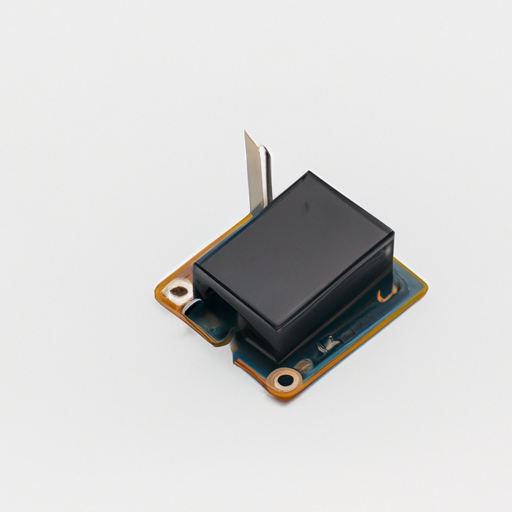
Adjustable sensors are a crucial component in many electronic devices and systems, providing the ability to detect changes in the environment and adjust accordingly. These sensors are used in a wide range of applications, from automotive systems to industrial machinery to consumer electronics. In this article, we will explore the components and modules that make up an adjustable sensor, as well as their functions and applications.Components of an Adjustable Sensor:1. Sensor Element: The sensor element is the core component of an adjustable sensor, responsible for detecting changes in the environment. There are many different types of sensor elements, each designed to detect specific types of stimuli such as light, temperature, pressure, or motion. The sensor element converts the detected stimulus into an electrical signal that can be processed by the sensor's circuitry.2. Signal Conditioning Circuitry: The signal conditioning circuitry is responsible for processing the electrical signal generated by the sensor element. This circuitry may include amplifiers, filters, and other components that are used to enhance the signal quality and remove any unwanted noise or interference. The signal conditioning circuitry is crucial for ensuring the accuracy and reliability of the sensor's output.3. Microcontroller: The microcontroller is the brain of the adjustable sensor, responsible for controlling its operation and processing the sensor data. The microcontroller may be programmed to perform various functions, such as adjusting the sensor's sensitivity, filtering the sensor data, or communicating with other devices. The microcontroller plays a crucial role in determining the overall performance and functionality of the adjustable sensor.4. User Interface: Many adjustable sensors include a user interface that allows the user to interact with the sensor and adjust its settings. The user interface may consist of buttons, switches, or a touchscreen display, depending on the sensor's design. The user interface provides a convenient way for the user to configure the sensor and monitor its operation.5. Power Supply: An adjustable sensor requires a power supply to operate, providing the necessary voltage and current to power its components. The power supply may be provided by a battery, a power adapter, or another external power source. The power supply is a critical component of the sensor, as it ensures that the sensor can operate reliably and continuously.Modules of an Adjustable Sensor:1. Communication Module: Many adjustable sensors include a communication module that allows them to communicate with other devices or systems. The communication module may support various communication protocols, such as UART, SPI, I2C, or wireless protocols like Bluetooth or Wi-Fi. This module enables the sensor to transmit data to a central control system or receive commands from an external device.2. Data Logging Module: Some adjustable sensors include a data logging module that allows them to store sensor data for later analysis. The data logging module may include a memory chip or storage device where the sensor data is stored. This module is useful for recording historical data and identifying trends or patterns in the sensor's output.3. Calibration Module: Calibration is an essential process for ensuring the accuracy and reliability of an adjustable sensor. Many sensors include a calibration module that allows them to be calibrated to a known standard or reference. The calibration module may include calibration coefficients or parameters that can be adjusted to compensate for any deviations or errors in the sensor's output.4. Alarm Module: Some adjustable sensors include an alarm module that can trigger an alarm or alert when certain conditions are met. The alarm module may include a buzzer, LED indicator, or other signaling device that alerts the user to a potential issue or anomaly. This module is useful for notifying the user of critical events or changes in the environment.Applications of Adjustable Sensors:Adjustable sensors are used in a wide range of applications, where the ability to detect changes in the environment and adjust accordingly is essential. Some common applications of adjustable sensors include:1. Automotive Systems: Adjustable sensors are used in automotive systems to monitor various parameters such as temperature, pressure, and motion. These sensors help to ensure the safe and efficient operation of the vehicle, providing feedback to the engine control unit or other systems.2. Industrial Machinery: Adjustable sensors are used in industrial machinery to monitor critical parameters such as temperature, pressure, and vibration. These sensors help to prevent equipment failures and optimize the performance of the machinery.3. Consumer Electronics: Adjustable sensors are used in consumer electronics such as smartphones, tablets, and wearables. These sensors enable features such as automatic screen brightness adjustment, motion detection, and orientation sensing.4. Environmental Monitoring: Adjustable sensors are used in environmental monitoring applications to detect changes in the environment such as temperature, humidity, and air quality. These sensors help to monitor and control environmental conditions in buildings, greenhouses, and other facilities.In conclusion, adjustable sensors are a versatile and essential component in many electronic devices and systems. By detecting changes in the environment and adjusting accordingly, these sensors play a crucial role in ensuring the safe and efficient operation of various applications. The components and modules of an adjustable sensor work together to provide accurate and reliable sensing capabilities, making them indispensable in today's technology-driven world.
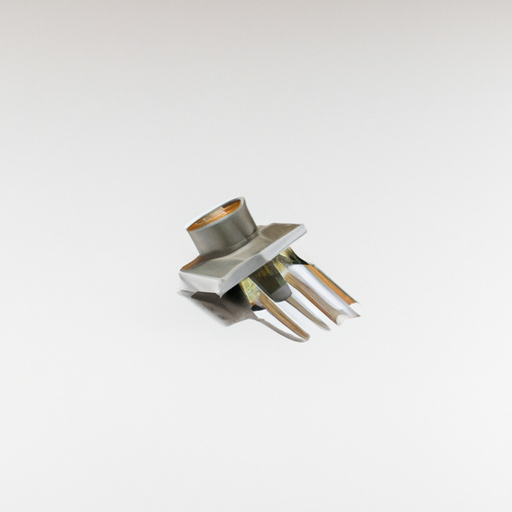
Fixed electrical sensors are devices that are used to detect changes in electrical signals and convert them into a measurable output. These sensors are widely used in various industries for monitoring and controlling processes, as well as for safety and security applications. There are several popular types of fixed electrical sensors that are commonly used in different applications. In this article, we will discuss some of the most popular fixed electrical sensor product types and their uses.1. Proximity SensorsProximity sensors are used to detect the presence or absence of an object without physical contact. These sensors work by emitting an electromagnetic field or a beam of light and detecting changes in the field or light when an object comes within a certain distance. Proximity sensors are commonly used in industrial automation, robotics, and automotive applications for detecting the position of objects, monitoring conveyor belts, and controlling machinery.2. Photoelectric SensorsPhotoelectric sensors use light to detect the presence or absence of an object. These sensors work by emitting a beam of light and measuring the amount of light that is reflected back to the sensor. Photoelectric sensors are used in a wide range of applications, such as detecting the presence of objects on conveyor belts, counting products on assembly lines, and monitoring the position of objects in packaging machines.3. Ultrasonic SensorsUltrasonic sensors use sound waves to detect the distance between the sensor and an object. These sensors emit high-frequency sound waves and measure the time it takes for the sound waves to bounce back to the sensor. Ultrasonic sensors are commonly used in applications where accurate distance measurement is required, such as in parking sensors, level measurement in tanks, and object detection in robotics.4. Capacitive SensorsCapacitive sensors detect changes in capacitance, which is the ability of an object to store an electrical charge. These sensors work by measuring the change in capacitance when an object comes within a certain distance of the sensor. Capacitive sensors are used in applications where non-metallic objects need to be detected, such as in food processing, pharmaceutical manufacturing, and liquid level sensing.5. Inductive SensorsInductive sensors detect the presence of metal objects by measuring changes in inductance, which is the ability of a coil to store energy in a magnetic field. These sensors work by generating an electromagnetic field and detecting changes in the field when a metal object comes within a certain distance. Inductive sensors are commonly used in industrial automation, machine tooling, and material handling applications for detecting the presence of metal objects.6. Temperature SensorsTemperature sensors are used to measure the temperature of an object or environment. These sensors work by detecting changes in electrical resistance, voltage, or current in response to changes in temperature. Temperature sensors are used in a wide range of applications, such as monitoring the temperature of industrial processes, controlling heating and cooling systems, and ensuring the safety of electrical equipment.7. Pressure SensorsPressure sensors are used to measure the pressure of gases or liquids in a system. These sensors work by detecting changes in pressure and converting them into an electrical signal. Pressure sensors are used in various applications, such as monitoring the pressure of hydraulic systems, controlling the flow of gases in HVAC systems, and measuring the pressure of liquids in medical devices.In conclusion, fixed electrical sensors are essential devices that are used in a wide range of applications for monitoring and controlling processes, as well as for safety and security purposes. There are several popular types of fixed electrical sensor product types, each with its own unique features and uses. By understanding the different types of fixed electrical sensors available, businesses and industries can choose the right sensor for their specific application needs and requirements.
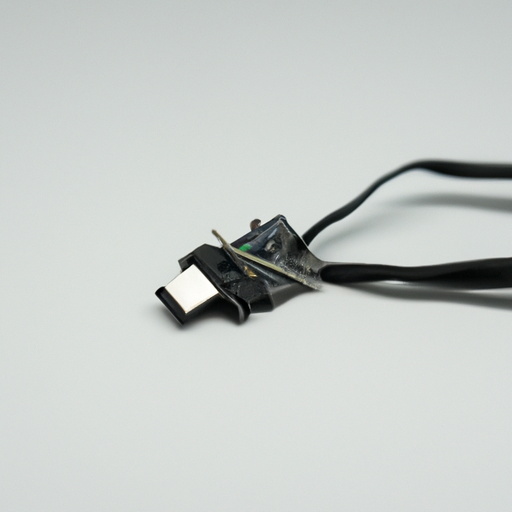
When it comes to choosing the spot for a fixed electrical sensor, there are several factors to consider in order to ensure optimal performance and functionality. Fixed electrical sensors are used in a variety of applications, including monitoring temperature, humidity, pressure, and other environmental conditions. The placement of these sensors is crucial in order to accurately capture data and provide valuable insights for decision-making.Here are some key considerations to keep in mind when choosing the spot for a fixed electrical sensor:1. Purpose of the sensor: The first step in choosing the spot for a fixed electrical sensor is to determine the purpose of the sensor. What specific data are you looking to capture? For example, if you are monitoring temperature, you will want to place the sensor in a location that accurately reflects the temperature of the area you are monitoring.2. Environmental conditions: Consider the environmental conditions of the area where the sensor will be placed. Is the area subject to extreme temperatures, humidity, or other factors that could affect the performance of the sensor? It is important to choose a spot that is representative of the overall conditions you are monitoring.3. Accessibility: Choose a spot that is easily accessible for maintenance and calibration. You will need to periodically check and calibrate the sensor to ensure accurate readings, so it is important to choose a spot that is easy to reach.4. Interference: Avoid placing the sensor in areas where it may be subject to interference from other electrical devices or sources of electromagnetic radiation. This can affect the accuracy of the sensor readings and lead to unreliable data.5. Placement height: Consider the height at which the sensor should be placed in order to capture the most accurate data. For example, if you are monitoring temperature, placing the sensor too close to the ground or too high up can affect the accuracy of the readings.6. Calibration: It is important to calibrate the sensor regularly to ensure accurate readings. Choose a spot that allows for easy access to the sensor for calibration purposes.7. Data collection: Consider how the data collected by the sensor will be used and who will have access to it. Choose a spot that allows for easy integration with your data collection system and ensures that the data is easily accessible to those who need it.In conclusion, choosing the spot for a fixed electrical sensor requires careful consideration of the purpose of the sensor, environmental conditions, accessibility, interference, placement height, calibration, and data collection. By taking these factors into account, you can ensure that your sensor is placed in the optimal spot to provide accurate and reliable data for your monitoring needs.
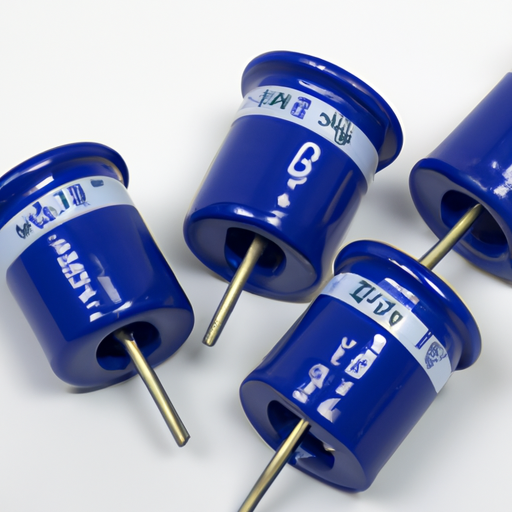
Polymer capacitors are a type of capacitor that uses conductive polymer as the electrolyte instead of liquid or solid electrolytes. They are known for their high capacitance values, low equivalent series resistance (ESR), and low equivalent series inductance (ESL). Polymer capacitors are widely used in various electronic devices such as smartphones, laptops, and power supplies due to their reliability and performance.The latest specification of polymer capacitors includes various parameters such as capacitance, voltage rating, temperature range, and size. These specifications are crucial in determining the suitability of a polymer capacitor for a particular application. Let's delve into each of these specifications in detail.Capacitance:
The capacitance of a polymer capacitor is a measure of its ability to store charge. It is typically measured in farads (F) or microfarads (μF). Polymer capacitors are available in a wide range of capacitance values, ranging from a few microfarads to several hundred microfarads. The capacitance value required for a specific application depends on the power requirements and voltage levels of the circuit.Voltage Rating:
The voltage rating of a polymer capacitor indicates the maximum voltage that the capacitor can withstand without breaking down. It is crucial to select a polymer capacitor with a voltage rating higher than the operating voltage of the circuit to prevent damage. Polymer capacitors are available in various voltage ratings, ranging from a few volts to several hundred volts.Temperature Range:
The temperature range of a polymer capacitor specifies the range of temperatures at which the capacitor can operate reliably. Polymer capacitors are designed to operate within a specific temperature range, typically from -55°C to 125°C. It is essential to consider the temperature range of the application environment when selecting a polymer capacitor to ensure optimal performance and longevity.Size:
The size of a polymer capacitor is another critical specification to consider when designing electronic circuits. Polymer capacitors are available in various sizes, ranging from small surface-mount devices to larger through-hole components. The size of the capacitor is determined by its capacitance value, voltage rating, and temperature range. It is essential to select a polymer capacitor that fits within the available space in the circuit while meeting the required specifications.In addition to these basic specifications, polymer capacitors may also have additional features such as low ESR, low ESL, high ripple current handling capability, and long operational life. These features enhance the performance and reliability of polymer capacitors in demanding applications.Polymer capacitors are commonly used in power supplies, voltage regulators, DC-DC converters, and other electronic devices that require high capacitance values and low ESR. They offer several advantages over traditional electrolytic capacitors, including higher capacitance density, lower ESR, and longer operational life.In conclusion, the latest specification of polymer capacitors includes parameters such as capacitance, voltage rating, temperature range, and size. These specifications are crucial in determining the suitability of a polymer capacitor for a specific application. Polymer capacitors offer high performance, reliability, and longevity, making them an ideal choice for a wide range of electronic devices.
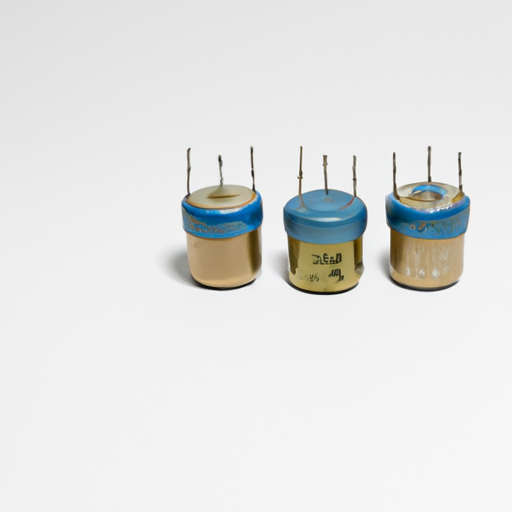
Silicon capacitors are a type of capacitor that is widely used in electronic devices and circuits. They are known for their high capacitance values, low leakage current, and stable performance over a wide range of temperatures. In this article, we will explore the various product features of silicon capacitors and how they are used in different applications.One of the key features of silicon capacitors is their high capacitance values. Silicon capacitors can have capacitance values ranging from a few picofarads to several microfarads, making them suitable for a wide range of applications. This high capacitance allows silicon capacitors to store a large amount of electrical charge, which is essential for filtering, decoupling, and energy storage in electronic circuits.Another important feature of silicon capacitors is their low leakage current. Leakage current is the amount of current that flows through a capacitor when it is charged, even when there is no external voltage applied. Silicon capacitors have very low leakage current, which makes them ideal for applications where low power consumption is critical. This feature also ensures that silicon capacitors maintain their charge for longer periods, making them suitable for energy storage applications.Silicon capacitors also have excellent stability over a wide range of temperatures. Unlike some other types of capacitors, silicon capacitors do not exhibit significant changes in capacitance or leakage current when exposed to extreme temperatures. This makes them suitable for use in harsh environments where temperature fluctuations are common, such as automotive, aerospace, and industrial applications.In addition to their high capacitance, low leakage current, and temperature stability, silicon capacitors also have a long lifespan. Silicon capacitors are known for their reliability and durability, with many manufacturers offering warranties of up to 10 years or more. This long lifespan makes silicon capacitors a cost-effective solution for applications that require long-term performance and reliability.Silicon capacitors are available in a variety of package sizes and configurations to suit different application requirements. They can be surface-mounted or through-hole mounted, and come in standard sizes such as 0805, 1206, and 1812. Some silicon capacitors also come in specialized packages, such as molded tantalum capacitors, which offer enhanced performance and reliability in specific applications.Silicon capacitors are used in a wide range of applications across various industries. Some common applications of silicon capacitors include power supplies, voltage regulators, motor drives, lighting systems, and communication equipment. Silicon capacitors are also used in medical devices, automotive electronics, and consumer electronics, where high capacitance, low leakage current, and temperature stability are essential.Overall, silicon capacitors are a versatile and reliable component that offers high capacitance, low leakage current, temperature stability, and long lifespan. They are widely used in electronic devices and circuits where energy storage, filtering, and decoupling are required. With their excellent performance and durability, silicon capacitors are a popular choice for engineers and designers looking for a high-quality capacitor solution.
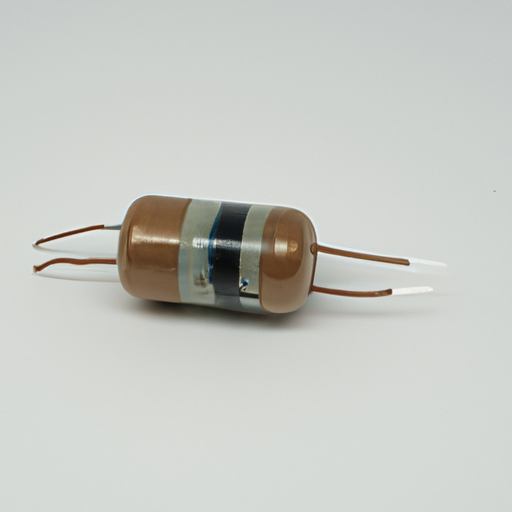
Choosing the right spot oxidation capacitor is crucial for ensuring the proper functioning of electronic devices and systems. Spot oxidation capacitors are used to store and release electrical energy in a controlled manner, making them essential components in a wide range of applications, from power supplies to audio equipment. In this article, we will discuss the factors to consider when selecting a spot oxidation capacitor and provide some tips for making the best choice.1. Capacitance: The capacitance of a spot oxidation capacitor is a measure of its ability to store electrical energy. It is important to choose a capacitor with the right capacitance for your specific application. Capacitance is typically measured in farads (F), with larger values indicating a greater ability to store energy. When selecting a spot oxidation capacitor, consider the voltage and current requirements of your system, as well as the desired discharge time.2. Voltage rating: The voltage rating of a spot oxidation capacitor is the maximum voltage that it can safely handle. It is important to choose a capacitor with a voltage rating that is equal to or greater than the maximum voltage that will be applied to it in your system. Using a capacitor with a lower voltage rating can result in damage to the capacitor and potentially to other components in the system.3. Size and shape: Spot oxidation capacitors come in a variety of sizes and shapes, so it is important to consider the physical dimensions of the capacitor when selecting one for your application. Make sure that the capacitor will fit properly in the space available and that it is compatible with the mounting options in your system.4. Temperature rating: The temperature rating of a spot oxidation capacitor is the maximum temperature at which it can safely operate. It is important to choose a capacitor with a temperature rating that is suitable for the operating conditions in your system. Using a capacitor with a lower temperature rating can result in reduced performance and reliability.5. ESR (Equivalent Series Resistance): ESR is a measure of the internal resistance of a spot oxidation capacitor. A lower ESR value indicates a capacitor with better performance and efficiency. When selecting a capacitor, consider the ESR value and choose one that meets the requirements of your system.6. Manufacturer reputation: When choosing a spot oxidation capacitor, it is important to consider the reputation of the manufacturer. Look for a manufacturer with a track record of producing high-quality capacitors that meet industry standards and specifications. A reputable manufacturer will also provide technical support and assistance if needed.7. Cost: Finally, consider the cost of the spot oxidation capacitor when making your selection. While it is important to choose a capacitor that meets the requirements of your system, it is also important to consider the overall cost of the capacitor and how it fits into your budget.In conclusion, choosing the right spot oxidation capacitor is essential for ensuring the proper functioning of electronic devices and systems. Consider factors such as capacitance, voltage rating, size and shape, temperature rating, ESR, manufacturer reputation, and cost when selecting a capacitor for your application. By carefully evaluating these factors and following the tips provided in this article, you can make an informed decision and choose a capacitor that meets your requirements and specifications.
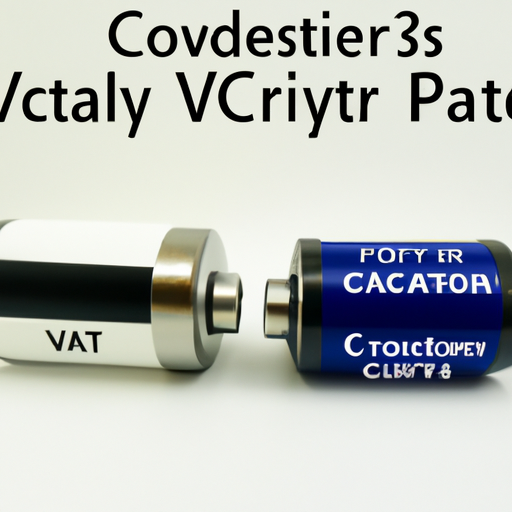
Variable capacitors are a type of capacitor that allows for the adjustment of capacitance, or the ability to store electrical charge, by changing the distance between the plates of the capacitor. This ability to vary the capacitance makes variable capacitors useful in a wide range of applications, from tuning radio frequencies to adjusting the speed of electric motors. In this article, we will explore the different types of variable capacitors available on the market today.1. Air Variable Capacitors:
Air variable capacitors are the most common type of variable capacitor and are widely used in radio frequency tuning circuits. They consist of two sets of metal plates separated by air, with one set of plates fixed in place and the other set connected to a shaft that can be rotated to change the distance between the plates. By adjusting the position of the movable plates, the capacitance of the capacitor can be varied, allowing for precise tuning of radio frequencies.2. Trimmer Capacitors:
Trimmer capacitors are a type of variable capacitor that is designed for fine-tuning applications where precise adjustments to capacitance are required. They are typically smaller in size than air variable capacitors and are often used in applications such as tuning circuits in radios and televisions. Trimmer capacitors can be adjusted using a small screwdriver or other tool to change the capacitance value.3. Vacuum Variable Capacitors:
Vacuum variable capacitors are a type of variable capacitor that is designed for high-power applications where high voltage and current levels are present. They consist of two sets of metal plates separated by a vacuum, which allows for higher capacitance values and greater voltage handling capabilities compared to air variable capacitors. Vacuum variable capacitors are commonly used in applications such as high-power RF amplifiers and transmitters.4. Ceramic Variable Capacitors:
Ceramic variable capacitors are a type of variable capacitor that uses a ceramic material as the dielectric between the plates. They are often used in applications where stability and reliability are important, such as in temperature-compensated oscillators and frequency synthesizers. Ceramic variable capacitors are available in a range of capacitance values and voltage ratings, making them suitable for a wide range of applications.5. Piston Variable Capacitors:
Piston variable capacitors are a type of variable capacitor that uses a piston mechanism to change the distance between the plates. They are often used in high-power applications where precise tuning is required, such as in high-power RF amplifiers and transmitters. Piston variable capacitors are capable of handling high voltage and current levels, making them suitable for demanding applications.6. Multi-section Variable Capacitors:
Multi-section variable capacitors are a type of variable capacitor that consists of multiple capacitor sections connected together. Each section can be adjusted independently, allowing for precise tuning of multiple circuits simultaneously. Multi-section variable capacitors are commonly used in applications such as antenna tuners and impedance matching networks, where multiple tuning elements are required.In conclusion, variable capacitors are a versatile component that can be used in a wide range of applications to adjust capacitance values. From air variable capacitors for radio frequency tuning to vacuum variable capacitors for high-power applications, there are many types of variable capacitors available to suit different needs. Whether you are looking for precise tuning capabilities or high voltage handling capabilities, there is a variable capacitor available to meet your requirements.
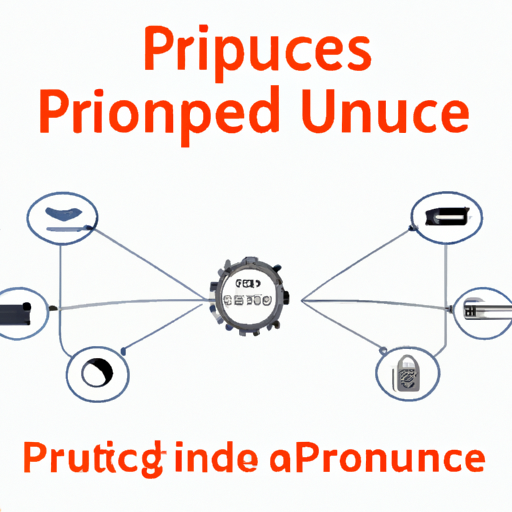
Fine-tune devices are a type of technology that allows users to adjust and optimize various settings and features of electronic devices. These devices are designed to enhance the performance and functionality of products across a wide range of industries. From audio equipment to gaming consoles, fine-tune devices offer users the ability to customize their devices to meet their specific needs and preferences.There are several product types that are included in fine-tune devices, each offering unique features and benefits. Some of the most common product types that are compatible with fine-tune devices include:1. Audio equipment: Fine-tune devices are commonly used with audio equipment such as speakers, headphones, and sound systems. These devices allow users to adjust the sound quality, volume, and other audio settings to create a customized listening experience. Whether you are a music enthusiast or a professional audio engineer, fine-tune devices can help you achieve the perfect sound.2. Gaming consoles: Gamers often use fine-tune devices to optimize their gaming experience. These devices allow users to adjust graphics settings, control input lag, and customize other features to improve gameplay. Whether you are playing on a console or a PC, fine-tune devices can help you get the most out of your gaming experience.3. Home automation systems: Fine-tune devices are also used with home automation systems to control and optimize various smart devices in the home. From thermostats to lighting systems, these devices allow users to adjust settings and create custom schedules to enhance energy efficiency and convenience. Whether you are looking to save money on your energy bills or simply make your home more comfortable, fine-tune devices can help you achieve your goals.4. Automotive systems: Fine-tune devices are commonly used in the automotive industry to optimize the performance of vehicles. These devices allow users to adjust engine settings, monitor fuel efficiency, and customize other features to improve the driving experience. Whether you are a car enthusiast or a professional mechanic, fine-tune devices can help you get the most out of your vehicle.5. Fitness trackers: Fine-tune devices are also used with fitness trackers and other wearable technology to optimize health and fitness goals. These devices allow users to track their activity levels, monitor their heart rate, and customize other settings to achieve their fitness goals. Whether you are a casual exerciser or a competitive athlete, fine-tune devices can help you stay on track and reach your fitness goals.In conclusion, fine-tune devices offer users the ability to customize and optimize a wide range of electronic products. From audio equipment to gaming consoles, these devices can help users achieve the perfect sound, graphics, and performance. Whether you are a music enthusiast, gamer, or fitness enthusiast, fine-tune devices can help you get the most out of your devices and achieve your goals.
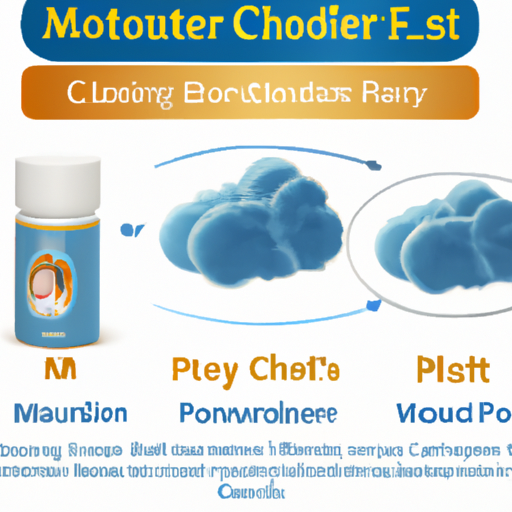
Cloud mother is a revolutionary product that is changing the way mothers care for their babies. With its innovative design and advanced technology, Cloud mother offers a wide range of features that make it the perfect choice for modern moms. In this article, we will explore the product features of Cloud mother and how they can benefit both mothers and their babies.One of the key features of Cloud mother is its ability to monitor the baby's vital signs in real-time. The device is equipped with sensors that track the baby's heart rate, breathing rate, and temperature, providing mothers with valuable information about their baby's health. This feature is especially useful for new moms who may be anxious about their baby's well-being. With Cloud mother, they can rest assured knowing that they will be alerted if there are any abnormalities in their baby's vital signs.Another important feature of Cloud mother is its sleep tracking capabilities. The device can monitor the baby's sleep patterns and provide mothers with insights into their baby's sleep quality. This feature is particularly helpful for moms who are struggling with sleep deprivation and want to ensure that their baby is getting enough rest. By tracking their baby's sleep, mothers can identify any patterns or issues that may be affecting their baby's sleep and take steps to address them.Cloud mother also offers a feeding tracker feature, which allows mothers to keep track of their baby's feeding schedule and intake. This feature is especially useful for breastfeeding moms who want to monitor their baby's feeding patterns and ensure that they are getting enough milk. With Cloud mother, moms can easily record the time and duration of each feeding session, as well as any notes or observations they may have. This information can be valuable for moms who are trying to establish a feeding routine or troubleshoot any feeding issues.In addition to monitoring vital signs, sleep, and feeding, Cloud mother also offers a remote viewing feature that allows mothers to check on their baby from anywhere. The device is equipped with a camera that streams live video footage of the baby's crib to the Cloud mother app on the mother's smartphone. This feature is perfect for moms who want to keep an eye on their baby while they are away or for moms who want to check in on their baby during nap time. With Cloud mother, moms can have peace of mind knowing that they can always see and hear their baby, no matter where they are.Cloud mother also comes with a built-in night light and lullaby feature, which can help soothe babies and promote better sleep. The night light emits a soft, gentle glow that can comfort babies during the night, while the lullabies can help calm babies and lull them to sleep. These features are perfect for moms who want to create a calming and relaxing environment for their baby's bedtime routine.Overall, Cloud mother is a versatile and innovative product that offers a wide range of features to help mothers care for their babies. From monitoring vital signs to tracking sleep and feeding, Cloud mother provides valuable insights and peace of mind for moms. With its remote viewing capabilities and soothing features, Cloud mother is the perfect companion for modern moms who want to ensure the health and well-being of their babies.
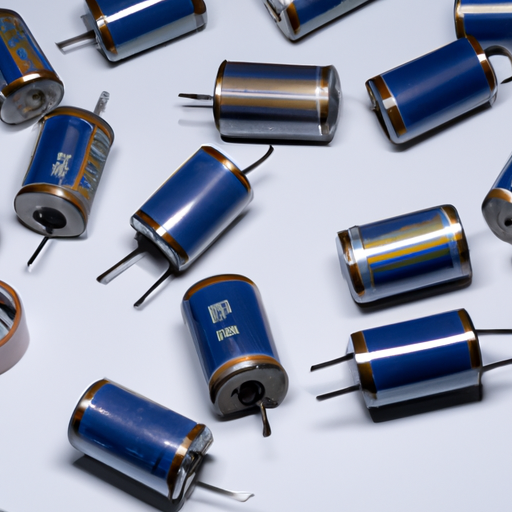
Film capacitors are a type of capacitor that is widely used in various electronic devices and applications. They are known for their high reliability, long lifespan, and excellent performance characteristics. In this article, we will explore the product features of film capacitors in detail.Film capacitors are made of a thin plastic film that is coated with a conductive material on both sides. The film is then wound into a cylindrical shape to create the capacitor. The most common types of film capacitors are made of materials such as polyester, polypropylene, and polycarbonate.One of the key features of film capacitors is their high dielectric strength. This means that they can withstand high voltages without breaking down or failing. Film capacitors are available in a wide range of voltage ratings, from a few volts to several thousand volts, making them suitable for a variety of applications.Another important feature of film capacitors is their low dielectric absorption. This means that they can store and release electrical energy quickly and efficiently, without losing energy due to internal losses. This makes film capacitors ideal for applications where fast response times are required, such as in power supplies and motor drives.Film capacitors also have a low equivalent series resistance (ESR) and equivalent series inductance (ESL), which means that they have low losses and can deliver high currents with minimal power dissipation. This makes film capacitors highly efficient and suitable for high-power applications.Film capacitors are also known for their excellent temperature stability. They can operate over a wide temperature range, from -55°C to 125°C or even higher, without significant changes in their electrical properties. This makes film capacitors suitable for use in harsh environments and extreme conditions.In addition to their high reliability and performance characteristics, film capacitors are also compact and lightweight. This makes them easy to integrate into electronic circuits and devices, without adding significant bulk or weight.Film capacitors are available in a variety of configurations, including radial leaded, axial leaded, surface mount, and module types. They are also available in different capacitance values, ranging from a few picofarads to several microfarads, to meet the requirements of different applications.Film capacitors are used in a wide range of applications, including power supplies, motor drives, lighting, audio equipment, telecommunications, and automotive electronics. They are also used in high-frequency and high-voltage applications, where their excellent performance characteristics are particularly beneficial.In conclusion, film capacitors are a versatile and reliable type of capacitor that offers high performance, long lifespan, and excellent temperature stability. Their low dielectric absorption, low ESR and ESL, and high dielectric strength make them ideal for a wide range of applications. Whether you are designing a power supply, motor drive, or audio amplifier, film capacitors are a great choice for your electronic circuit design.
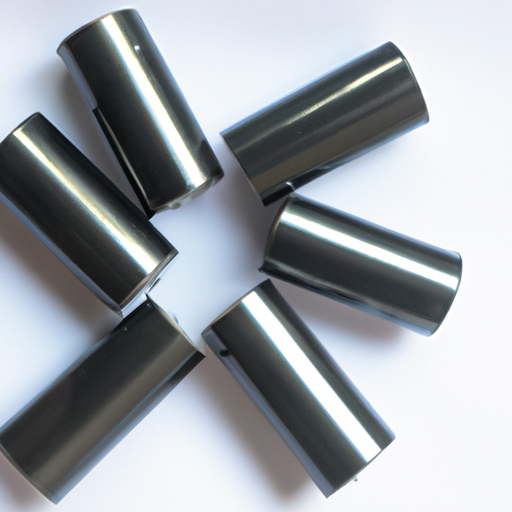
The film capacitor industry is experiencing several key trends that are shaping the future of this important component in electronic devices. Film capacitors are widely used in a variety of applications, including power supplies, lighting, motor drives, and audio equipment, due to their high reliability, long lifespan, and excellent electrical properties. As technology continues to advance, the film capacitor industry is evolving to meet the demands of the market and provide innovative solutions for a wide range of applications.One of the key trends in the film capacitor industry is the increasing demand for high-performance capacitors with improved energy storage capabilities. As electronic devices become more complex and power-hungry, there is a growing need for capacitors that can store and release energy quickly and efficiently. Film capacitors are well-suited for this task, as they can handle high currents and have low equivalent series resistance (ESR), making them ideal for high-power applications. Manufacturers are developing new film capacitor technologies, such as metallized polypropylene and polyester films, to meet the increasing demand for high-performance capacitors in the market.Another trend in the film capacitor industry is the growing focus on sustainability and environmental responsibility. As consumers become more conscious of the environmental impact of electronic devices, manufacturers are under pressure to develop eco-friendly products that minimize waste and reduce energy consumption. Film capacitors are already known for their long lifespan and low failure rates, which contribute to their sustainability. However, manufacturers are also exploring new materials and manufacturing processes to further improve the environmental performance of film capacitors. For example, some companies are using biodegradable films and recyclable materials in their capacitor designs to reduce the environmental impact of their products.In addition to performance and sustainability, cost is also a key factor driving trends in the film capacitor industry. As the demand for electronic devices continues to grow, manufacturers are under pressure to reduce production costs and offer competitive pricing to consumers. Film capacitors are already cost-effective compared to other types of capacitors, such as ceramic or electrolytic capacitors. However, manufacturers are constantly looking for ways to further reduce costs through process optimization, automation, and economies of scale. By streamlining production processes and improving efficiency, manufacturers can offer high-quality film capacitors at competitive prices, making them an attractive choice for a wide range of applications.One of the emerging trends in the film capacitor industry is the increasing use of film capacitors in automotive applications. With the rise of electric vehicles and advanced driver assistance systems (ADAS), there is a growing demand for high-performance capacitors that can withstand the harsh operating conditions of automotive environments. Film capacitors are well-suited for automotive applications due to their high reliability, low ESR, and ability to handle high temperatures. Manufacturers are developing specialized film capacitors for automotive use, with features such as high voltage ratings, high ripple current capabilities, and robust construction to meet the stringent requirements of the automotive industry.Overall, the film capacitor industry is experiencing several key trends that are shaping the future of this important component in electronic devices. From high-performance capacitors for power-hungry applications to sustainable and cost-effective solutions for a wide range of industries, film capacitors are poised to play a crucial role in the advancement of technology. By staying ahead of these trends and continuing to innovate, manufacturers can meet the evolving needs of the market and provide cutting-edge solutions for a variety of applications.

Film capacitors are widely used in various electronic devices and systems due to their high reliability, stability, and performance. These capacitors are made using a variety of production processes to ensure their quality and functionality. In this article, we will discuss the common production processes for film capacitors.Film capacitors are made using a thin film of dielectric material, which is sandwiched between two metal electrodes. The dielectric material can be made of various materials such as polyester, polypropylene, polycarbonate, or polyethylene terephthalate (PET). The metal electrodes are typically made of aluminum or zinc.The production process for film capacitors typically involves the following steps:1. Film preparation: The first step in the production of film capacitors is the preparation of the dielectric film. The dielectric film is typically produced by extruding the dielectric material into a thin film. The thickness of the film can vary depending on the desired capacitance and voltage rating of the capacitor.2. Metallization: Once the dielectric film is prepared, the next step is to metallize the film. Metallization is the process of depositing a thin layer of metal onto the dielectric film to create the electrodes of the capacitor. The metal electrodes are typically deposited using techniques such as sputtering, evaporation, or electroplating.3. Winding: After metallization, the dielectric film is wound into a cylindrical shape to form the capacitor. The winding process is typically done using automated machinery to ensure precision and consistency in the winding of the film.4. Impregnation: Once the film is wound, it is impregnated with a dielectric fluid to improve the performance and reliability of the capacitor. The dielectric fluid helps to fill any voids or gaps in the capacitor and provides additional insulation.5. Encapsulation: After impregnation, the capacitor is encapsulated in a protective casing to protect it from external factors such as moisture, dust, and mechanical damage. The encapsulation process typically involves sealing the capacitor in a plastic or metal casing.6. Testing: The final step in the production of film capacitors is testing. The capacitors are tested for various parameters such as capacitance, voltage rating, leakage current, and insulation resistance to ensure they meet the required specifications. Any capacitors that do not meet the specifications are rejected and discarded.Overall, the production of film capacitors involves a series of precise and controlled processes to ensure the quality and reliability of the capacitors. By following these production processes, manufacturers can produce high-quality film capacitors that meet the requirements of various electronic applications.
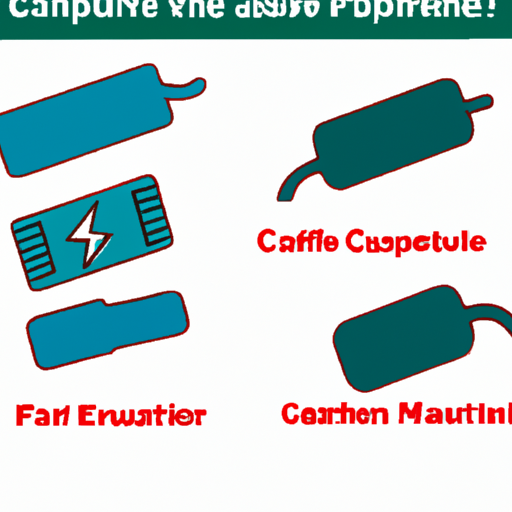
Film capacitors are a type of capacitor that is widely used in various electronic devices and applications due to their high reliability, stability, and performance. These capacitors are made up of several components and modules that work together to store and release electrical energy. In this article, we will explore the different components and modules that make up a film capacitor and how they contribute to its overall functionality.1. Film: The film is the most important component of a film capacitor as it is responsible for storing the electrical energy. The film is typically made of a thin layer of plastic material such as polyester, polypropylene, or polycarbonate. These materials are chosen for their high dielectric strength, low dielectric loss, and excellent thermal stability. The film is wound into a cylindrical shape to increase the capacitance value and reduce the size of the capacitor.2. Electrodes: The electrodes are metal plates that are attached to the film to allow for the flow of electrical current. The electrodes are typically made of aluminum, zinc, or copper due to their high conductivity and corrosion resistance. The electrodes are coated with a thin layer of metal oxide to improve their adhesion to the film and prevent oxidation. The electrodes are connected to the external terminals of the capacitor to allow for the connection to an electrical circuit.3. Dielectric: The dielectric is the insulating material that separates the electrodes and prevents them from coming into direct contact with each other. The dielectric material is chosen for its high dielectric constant, low dielectric loss, and high breakdown voltage. The dielectric material also plays a crucial role in determining the capacitance value and voltage rating of the capacitor. Common dielectric materials used in film capacitors include polyester, polypropylene, and polycarbonate.4. Capacitance: The capacitance of a film capacitor is determined by the size of the film, the dielectric constant of the dielectric material, and the distance between the electrodes. The capacitance value is measured in farads (F) and typically ranges from picofarads (pF) to microfarads (μF). Film capacitors are available in a wide range of capacitance values to suit different applications and requirements.5. Voltage Rating: The voltage rating of a film capacitor is the maximum voltage that the capacitor can safely withstand without breaking down. The voltage rating is determined by the dielectric strength of the dielectric material and the distance between the electrodes. Film capacitors are available in a wide range of voltage ratings, from a few volts to several kilovolts, to suit different applications and requirements.6. Tolerance: The tolerance of a film capacitor is the maximum deviation in capacitance value from the specified value. The tolerance is expressed as a percentage and indicates the accuracy of the capacitor's capacitance value. Film capacitors typically have a tolerance of ±5% or ±10%, although tighter tolerances are also available for more precise applications.7. Temperature Coefficient: The temperature coefficient of a film capacitor is the change in capacitance value with temperature. The temperature coefficient is expressed as parts per million per degree Celsius (ppm/°C) and indicates how sensitive the capacitance value is to changes in temperature. Film capacitors typically have a temperature coefficient of around ±100 ppm/°C, although lower coefficients are also available for more stable applications.8. ESR (Equivalent Series Resistance): The ESR of a film capacitor is the equivalent series resistance that is present in the capacitor due to the resistance of the electrodes, dielectric material, and connections. The ESR of a film capacitor is typically very low, ranging from a few milliohms to a few ohms, depending on the size and construction of the capacitor. Low ESR is desirable in film capacitors as it minimizes energy losses and improves the efficiency of the capacitor.9. Self-Healing: Film capacitors are known for their self-healing properties, which allow them to recover from small defects or breakdowns in the dielectric material. When a film capacitor is subjected to a high voltage or current, small defects or breakdowns may occur in the dielectric material. The self-healing mechanism of film capacitors causes these defects to be repaired by the surrounding dielectric material, preventing catastrophic failure and extending the lifespan of the capacitor.In conclusion, film capacitors are essential components in various electronic devices and applications due to their high reliability, stability, and performance. These capacitors are made up of several components and modules that work together to store and release electrical energy. The film, electrodes, dielectric, capacitance, voltage rating, tolerance, temperature coefficient, ESR, and self-healing properties are all important aspects of a film capacitor that contribute to its overall functionality. By understanding the different components and modules of a film capacitor, engineers and designers can select the right capacitor for their specific application and ensure optimal performance and reliability.
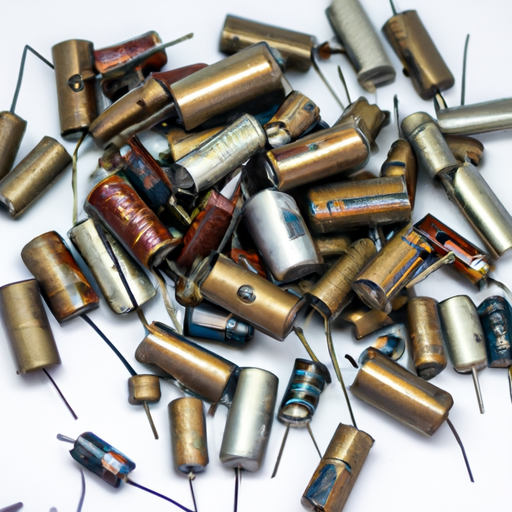
Super capacitors, also known as ultracapacitors or electric double-layer capacitors, are a type of energy storage device that offers high power density, fast charging and discharging capabilities, and a long cycle life. These unique features make super capacitors an ideal solution for a wide range of applications, from consumer electronics to renewable energy systems.One of the key features of super capacitors is their high power density. Unlike traditional batteries, which store energy in chemical form, super capacitors store energy in an electric field. This allows them to deliver high power output in a short amount of time, making them ideal for applications that require quick bursts of energy, such as electric vehicles and power tools.Another important feature of super capacitors is their fast charging and discharging capabilities. Super capacitors can be charged and discharged much more quickly than batteries, allowing for rapid energy storage and release. This makes them well-suited for applications that require frequent cycling, such as regenerative braking systems in vehicles.In addition to their high power density and fast charging capabilities, super capacitors also offer a long cycle life. Unlike batteries, which degrade over time as a result of chemical reactions, super capacitors do not suffer from the same degradation mechanisms. This means that super capacitors can be cycled thousands of times without losing their performance, making them a reliable and durable energy storage solution.Super capacitors also have a wide operating temperature range, making them suitable for use in extreme environments. They can operate in temperatures ranging from -40°C to 85°C, making them ideal for applications that require energy storage in harsh conditions, such as automotive and aerospace systems.Another key feature of super capacitors is their low maintenance requirements. Unlike batteries, which require regular maintenance and monitoring to ensure optimal performance, super capacitors are virtually maintenance-free. This makes them a cost-effective and hassle-free energy storage solution for a wide range of applications.Super capacitors are also environmentally friendly, as they do not contain toxic chemicals or heavy metals like traditional batteries. This makes them a sustainable energy storage option for applications that require long-term reliability and minimal environmental impact.In conclusion, super capacitors offer a range of unique features that make them an attractive energy storage solution for a wide range of applications. From high power density and fast charging capabilities to long cycle life and low maintenance requirements, super capacitors provide a reliable and efficient way to store and release energy. As technology continues to advance, super capacitors are likely to play an increasingly important role in the development of new and innovative energy storage solutions.
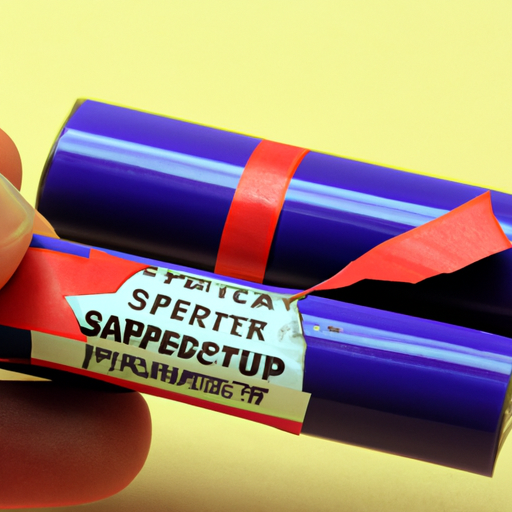
Super capacitors, also known as ultracapacitors or electric double-layer capacitors, are energy storage devices that have been gaining popularity in recent years due to their high power density and long cycle life. Unlike traditional capacitors, which store energy in an electric field, super capacitors store energy in an electrostatic double layer at the interface between a solid electrode and an electrolyte.Super capacitors have several key advantages over traditional batteries and capacitors. One of the main advantages is their high power density, which allows them to deliver large amounts of power in a short amount of time. This makes them ideal for applications that require rapid energy storage and release, such as regenerative braking in electric vehicles or peak power shaving in renewable energy systems.Another advantage of super capacitors is their long cycle life. While traditional batteries degrade over time due to chemical reactions that occur during charge and discharge cycles, super capacitors do not suffer from the same degradation mechanisms. This means that super capacitors can be cycled hundreds of thousands of times without significant loss of performance, making them a reliable and durable energy storage solution.Super capacitors also have a high energy efficiency, with the ability to store and release energy with minimal losses. This is due to their low internal resistance, which allows them to charge and discharge quickly without dissipating excess heat. As a result, super capacitors are able to operate at high efficiency levels, making them a cost-effective energy storage solution for a wide range of applications.One of the key applications of super capacitors is in hybrid and electric vehicles. Super capacitors can be used to store energy during braking events and release it during acceleration, reducing the strain on the vehicle's battery and improving overall efficiency. In addition, super capacitors can provide the high power bursts needed for rapid acceleration, making them an ideal complement to traditional batteries in electric vehicles.Super capacitors are also being used in renewable energy systems, where they can help to smooth out fluctuations in power output from sources such as solar panels and wind turbines. By storing excess energy during periods of high production and releasing it during periods of low production, super capacitors can help to stabilize the grid and improve the overall reliability of renewable energy systems.In the consumer electronics industry, super capacitors are being used to improve the performance of devices such as smartphones and laptops. By providing quick bursts of power when needed, super capacitors can help to extend battery life and improve overall performance. In addition, super capacitors can be used to provide backup power in the event of a sudden power outage, ensuring that critical data is not lost.Overall, super capacitors offer a number of advantages over traditional energy storage devices, including high power density, long cycle life, and high energy efficiency. As the demand for energy storage solutions continues to grow, super capacitors are likely to play an increasingly important role in a wide range of applications, from electric vehicles to renewable energy systems to consumer electronics. With ongoing research and development efforts aimed at improving the performance and cost-effectiveness of super capacitors, it is clear that these devices have a bright future ahead.
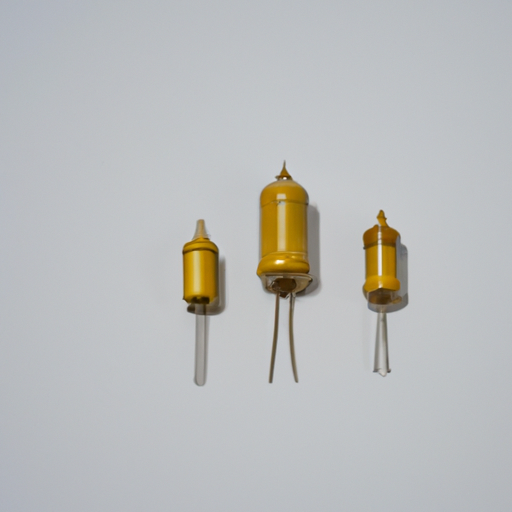
Ceramic capacitors are widely used in electronic circuits due to their reliability, stability, and cost-effectiveness. They are commonly used for decoupling, filtering, bypassing, and coupling applications in various electronic devices. In this article, we will discuss some popular models of ceramic capacitors and their features.1. X7R Capacitors:
X7R capacitors are one of the most commonly used ceramic capacitors due to their stable capacitance over a wide temperature range. They have a temperature coefficient of ±15% and are suitable for applications where stability is crucial. X7R capacitors are available in various capacitance values and voltage ratings, making them versatile for different electronic circuits.2. Y5V Capacitors:
Y5V capacitors are known for their high capacitance values and low cost. However, they have a high temperature coefficient of ±22%, which makes them less stable compared to X7R capacitors. Y5V capacitors are commonly used in applications where stability is not critical, such as coupling and bypassing circuits.3. C0G/NP0 Capacitors:
C0G/NP0 capacitors are known for their high stability and low temperature coefficient of ±30 ppm/°C. They are ideal for applications where precision and stability are essential, such as in oscillators, filters, and timing circuits. C0G/NP0 capacitors are available in a wide range of capacitance values and voltage ratings, making them suitable for various electronic applications.4. Z5U Capacitors:
Z5U capacitors are known for their high capacitance values and low cost, similar to Y5V capacitors. However, they have a high temperature coefficient of ±22%, which makes them less stable compared to C0G/NP0 capacitors. Z5U capacitors are commonly used in applications where stability is not critical, such as in power supply and decoupling circuits.5. X5R Capacitors:
X5R capacitors are similar to X7R capacitors in terms of stability and temperature coefficient, with a slightly higher temperature coefficient of ±15%. They are commonly used in applications where stability is important, such as in filtering and decoupling circuits. X5R capacitors are available in various capacitance values and voltage ratings, making them versatile for different electronic circuits.In conclusion, ceramic capacitors are essential components in electronic circuits due to their reliability, stability, and cost-effectiveness. The popular models mentioned above offer a wide range of capacitance values, voltage ratings, and temperature coefficients to suit various electronic applications. Whether you need high stability, high capacitance values, or low cost, there is a ceramic capacitor model that meets your requirements.
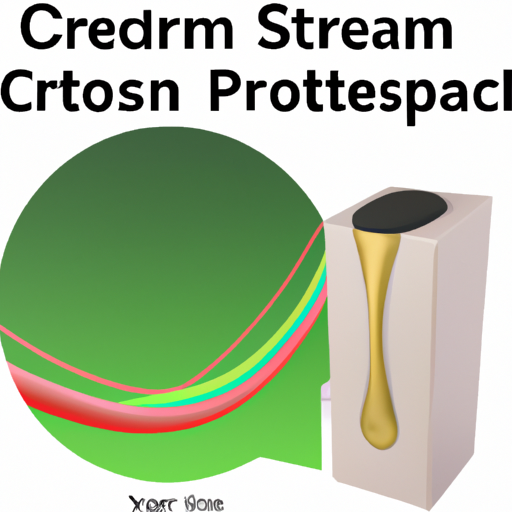
Ceramic capacitors are widely used in electronic circuits for their high reliability, stability, and low cost. They are available in a variety of models, each with its own unique characteristics and specifications. In this article, we will discuss the differences between mainstream ceramic capacitor models, including their construction, materials, performance, and applications.1. Class 1 vs. Class 2 CapacitorsCeramic capacitors are classified into two main categories: Class 1 and Class 2. Class 1 capacitors are known for their high stability and low losses, making them suitable for precision applications such as timing circuits, filters, and oscillators. They are made from materials like NP0, C0G, and P100, which have a very low temperature coefficient and high insulation resistance.On the other hand, Class 2 capacitors are designed for general-purpose applications where stability is not critical. They are made from materials like X7R, X5R, and Y5V, which have a higher dielectric constant and lower insulation resistance compared to Class 1 materials. Class 2 capacitors are commonly used in decoupling, bypass, and coupling applications.2. Dielectric MaterialsCeramic capacitors are made from various dielectric materials, each with its own unique properties. The most common dielectric materials used in ceramic capacitors include:- NP0 (C0G): This material is known for its high stability over a wide temperature range (-55°C to 125°C) and low losses. NP0 capacitors are ideal for precision applications where temperature stability is critical.- X7R: This material offers a high dielectric constant and good stability over a moderate temperature range (-55°C to 125°C). X7R capacitors are commonly used in decoupling and filtering applications.- X5R: Similar to X7R, X5R capacitors have a high dielectric constant and good stability over a moderate temperature range (-55°C to 85°C). They are suitable for general-purpose applications.- Y5V: This material has a high dielectric constant and low stability over a wide temperature range (-30°C to 85°C). Y5V capacitors are used in low-cost applications where stability is not critical.3. Capacitance RangeCeramic capacitors are available in a wide range of capacitance values, from picofarads (pF) to microfarads (µF). The capacitance value of a ceramic capacitor is determined by its physical size, dielectric material, and construction. Class 1 capacitors typically have lower capacitance values (pF to nF) compared to Class 2 capacitors, which have higher capacitance values (nF to µF).4. Voltage RatingCeramic capacitors are rated for a specific voltage, which indicates the maximum voltage that can be applied across the capacitor without causing damage. The voltage rating of a ceramic capacitor is determined by its dielectric material, thickness, and construction. Class 1 capacitors typically have lower voltage ratings (up to a few hundred volts) compared to Class 2 capacitors, which have higher voltage ratings (up to several kilovolts).5. Size and PackageCeramic capacitors come in a variety of sizes and packages, including surface-mount, through-hole, and chip capacitors. The size and package of a ceramic capacitor depend on its capacitance value, voltage rating, and application requirements. Surface-mount capacitors are commonly used in compact electronic devices, while through-hole capacitors are used in larger electronic assemblies.6. Temperature CoefficientThe temperature coefficient of a ceramic capacitor indicates how its capacitance value changes with temperature. Class 1 capacitors have a very low temperature coefficient (NP0, C0G), which means their capacitance value remains stable over a wide temperature range. Class 2 capacitors have a higher temperature coefficient (X7R, X5R, Y5V), which means their capacitance value can vary significantly with temperature.7. ESR and ESLEquivalent series resistance (ESR) and equivalent series inductance (ESL) are important parameters that affect the performance of ceramic capacitors. ESR is the resistance of the capacitor's internal components, while ESL is the inductance of the capacitor's leads and connections. Lower ESR and ESL values result in better performance and efficiency in high-frequency applications.In conclusion, ceramic capacitors are available in a variety of models with different characteristics and specifications. Understanding the differences between mainstream ceramic capacitor models can help engineers and designers select the right capacitor for their specific application requirements. By considering factors such as dielectric material, capacitance range, voltage rating, size, temperature coefficient, ESR, and ESL, engineers can choose the most suitable ceramic capacitor for their electronic circuits.

Tantalum capacitors, also known as 钽 capacitors, are a type of electrolytic capacitor that uses tantalum metal as the anode. These capacitors are known for their high capacitance density, stability, and reliability, making them ideal for a wide range of applications in electronics.One of the key features of 钽 capacitors is their high capacitance density. Tantalum capacitors can achieve capacitance values that are much higher than other types of capacitors of similar size. This high capacitance density makes 钽 capacitors ideal for applications where space is limited and high capacitance values are required.Another important feature of 钽 capacitors is their stability. Tantalum capacitors have a very stable capacitance over a wide range of temperatures and frequencies, making them suitable for use in applications where consistent performance is critical. This stability is due to the unique properties of tantalum metal, which has a high melting point and is resistant to corrosion.In addition to their high capacitance density and stability, 钽 capacitors are also known for their reliability. Tantalum capacitors have a long service life and are less prone to failure compared to other types of capacitors. This reliability is important in applications where downtime is not an option, such as in medical devices, aerospace systems, and telecommunications equipment.One of the key advantages of 钽 capacitors is their low equivalent series resistance (ESR) and equivalent series inductance (ESL). This low ESR and ESL allow 钽 capacitors to provide high ripple current handling capabilities and low impedance, making them ideal for use in power supply and filtering applications. The low ESR and ESL of 钽 capacitors also contribute to their high efficiency and performance in high-frequency applications.Another important feature of 钽 capacitors is their self-healing properties. Tantalum capacitors have the ability to recover from overvoltage or overcurrent conditions, which helps to prevent catastrophic failure and extend the service life of the capacitor. This self-healing feature is particularly important in applications where the capacitor may be subjected to transient voltage spikes or other electrical stresses.In conclusion, 钽 capacitors are a versatile and reliable type of capacitor that offers high capacitance density, stability, and efficiency. These capacitors are well-suited for a wide range of applications in electronics, including power supply, filtering, decoupling, and timing circuits. With their high performance and long service life, 钽 capacitors are an excellent choice for engineers and designers looking for a high-quality capacitor solution.
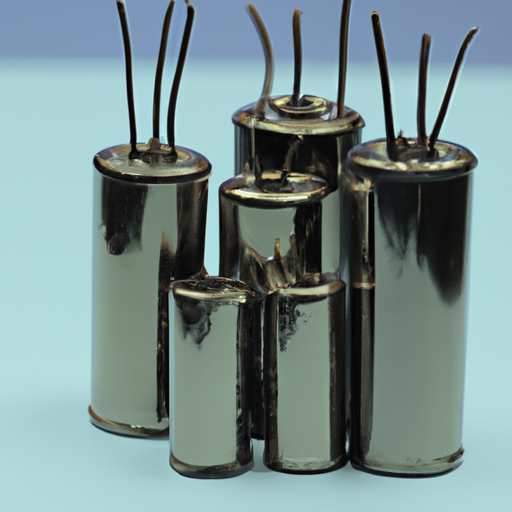
Tantalum capacitors, also known as 钽 capacitors, are widely used in electronic devices due to their high capacitance, low leakage current, and stable performance. There are many different models of 钽 capacitors available in the market, each with its own unique features and specifications. In this article, we will discuss the top 10 popular models of 钽 capacitors in the mainstream.1. KEMET T491 Series: The KEMET T491 Series is a popular choice for 钽 capacitors due to its high reliability and low ESR (Equivalent Series Resistance). These capacitors are available in various capacitance values and voltage ratings, making them suitable for a wide range of applications.2. AVX TAJ Series: The AVX TAJ Series is another popular model of 钽 capacitors known for its high capacitance and low leakage current. These capacitors are available in surface mount and through-hole configurations, making them versatile for different types of circuit designs.3. Vishay 293D Series: The Vishay 293D Series is a high-performance 钽 capacitor that offers low ESR and high ripple current handling capabilities. These capacitors are suitable for applications requiring high reliability and stability.4. Panasonic TCG Series: The Panasonic TCG Series is a popular choice for 钽 capacitors due to its high capacitance and low ESR. These capacitors are available in various case sizes and voltage ratings, making them suitable for a wide range of applications.5. Cornell Dubilier T4 Series: The Cornell Dubilier T4 Series is a high-quality 钽 capacitor known for its high reliability and long operational life. These capacitors are suitable for applications requiring high capacitance and low ESR.6. Murata TPS Series: The Murata TPS Series is a popular choice for 钽 capacitors due to its high capacitance and low ESR. These capacitors are available in various case sizes and voltage ratings, making them suitable for a wide range of applications.7. Nichicon TAP Series: The Nichicon TAP Series is a high-performance 钽 capacitor known for its high reliability and low ESR. These capacitors are suitable for applications requiring high capacitance and low leakage current.8. Rubycon TZA Series: The Rubycon TZA Series is a popular choice for 钽 capacitors due to its high capacitance and low ESR. These capacitors are suitable for applications requiring high reliability and stability.9. EPCOS B451 Series: The EPCOS B451 Series is a high-quality 钽 capacitor known for its high reliability and long operational life. These capacitors are suitable for applications requiring high capacitance and low ESR.10. Yageo TAC Series: The Yageo TAC Series is a popular choice for 钽 capacitors due to its high capacitance and low ESR. These capacitors are suitable for applications requiring high reliability and stability.In conclusion, 钽 capacitors are essential components in electronic devices, and there are many different models available in the market. The top 10 popular models of 钽 capacitors mentioned in this article are known for their high reliability, low ESR, and high capacitance, making them suitable for a wide range of applications. It is important to choose the right model of 钽 capacitor based on the specific requirements of your circuit design to ensure optimal performance and reliability.
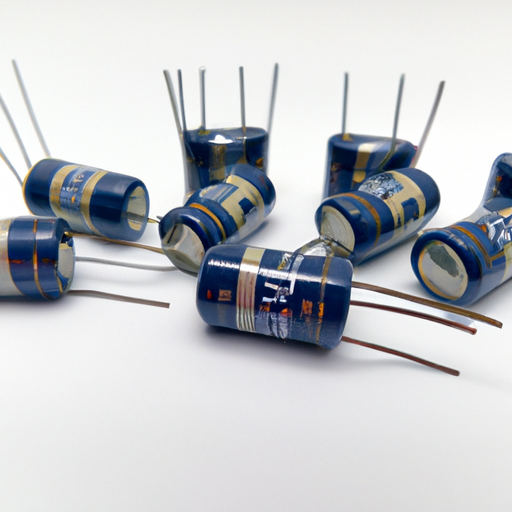
IntroductionCapacitors are essential components in electronic devices, used to store and release electrical energy. Tantalum capacitors, also known as Ta capacitors or Ta caps, are a type of electrolytic capacitor that uses tantalum metal as the anode. Tantalum capacitors are known for their high capacitance values, low leakage current, and stable performance over a wide temperature range. In this article, we will discuss the latest specifications of tantalum capacitors, including their construction, characteristics, and applications.Construction of Tantalum CapacitorsTantalum capacitors are constructed using tantalum metal as the anode, a thin layer of tantalum pentoxide as the dielectric, and a conductive material such as manganese dioxide as the cathode. The tantalum metal is sintered into a porous pellet, which is then coated with a layer of tantalum pentoxide. The cathode material is then applied to the surface of the pellet, forming a solid electrolyte interface.The construction of tantalum capacitors allows for high capacitance values in a small package size. Tantalum capacitors are available in various package sizes, including surface mount and through-hole configurations. Surface mount tantalum capacitors are popular in modern electronics due to their compact size and high capacitance values.Characteristics of Tantalum CapacitorsTantalum capacitors have several key characteristics that make them ideal for a wide range of applications. Some of the main characteristics of tantalum capacitors include:1. High Capacitance: Tantalum capacitors have high capacitance values compared to other types of capacitors. This allows for the storage of a large amount of electrical energy in a small package size.2. Low Leakage Current: Tantalum capacitors have low leakage current, which means they can hold a charge for an extended period without losing energy. This makes them ideal for applications that require stable voltage levels.3. Stable Performance: Tantalum capacitors have stable performance over a wide temperature range, making them suitable for use in harsh environments. They can operate reliably in temperatures ranging from -55°C to 125°C.4. Low ESR: Tantalum capacitors have low equivalent series resistance (ESR), which allows for efficient energy transfer and minimal power loss. This makes them ideal for high-frequency applications.5. Long Lifespan: Tantalum capacitors have a long lifespan, with some models rated for up to 10,000 hours of continuous operation. This makes them a reliable choice for critical applications.Applications of Tantalum CapacitorsTantalum capacitors are used in a wide range of electronic devices and applications due to their high capacitance values and stable performance. Some common applications of tantalum capacitors include:1. Power Supplies: Tantalum capacitors are used in power supply circuits to store and release energy, smoothing out voltage fluctuations and ensuring stable power delivery.2. Audio Equipment: Tantalum capacitors are used in audio equipment such as amplifiers and speakers to filter out noise and improve sound quality.3. Telecommunications: Tantalum capacitors are used in telecommunications equipment such as cell phones and base stations to regulate voltage levels and ensure reliable communication.4. Automotive Electronics: Tantalum capacitors are used in automotive electronics such as engine control units and infotainment systems to provide stable power supply and protect sensitive components from voltage spikes.5. Medical Devices: Tantalum capacitors are used in medical devices such as pacemakers and defibrillators to store energy and deliver precise electrical pulses.Latest Specifications of Tantalum CapacitorsThe latest specifications of tantalum capacitors include advancements in capacitance values, voltage ratings, and package sizes. Manufacturers are constantly innovating to improve the performance and reliability of tantalum capacitors. Some of the latest specifications of tantalum capacitors include:1. High Capacitance Values: Tantalum capacitors are now available with capacitance values ranging from a few microfarads to several hundred microfarads. This allows for the storage of a large amount of energy in a compact package.2. Higher Voltage Ratings: Tantalum capacitors are now available with higher voltage ratings, up to 100V or more. This allows for their use in a wider range of applications, including power supplies and automotive electronics.3. Miniaturization: Manufacturers are developing smaller and more compact tantalum capacitors to meet the demands of modern electronics. Surface mount tantalum capacitors are available in ultra-small package sizes, making them ideal for portable devices and wearables.4. Low ESR and ESL: Tantalum capacitors with low equivalent series resistance (ESR) and equivalent series inductance (ESL) are now available, allowing for efficient energy transfer and minimal power loss. This makes them suitable for high-frequency applications.5. Extended Lifespan: Manufacturers are improving the lifespan of tantalum capacitors by using advanced materials and manufacturing techniques. Some models are now rated for up to 20,000 hours of continuous operation, making them a reliable choice for critical applications.ConclusionTantalum capacitors are essential components in electronic devices, known for their high capacitance values, low leakage current, and stable performance. The latest specifications of tantalum capacitors include advancements in capacitance values, voltage ratings, and package sizes. Manufacturers are constantly innovating to improve the performance and reliability of tantalum capacitors, making them a popular choice for a wide range of applications. With their high energy storage capacity, compact size, and stable performance, tantalum capacitors are an ideal choice for modern electronics.
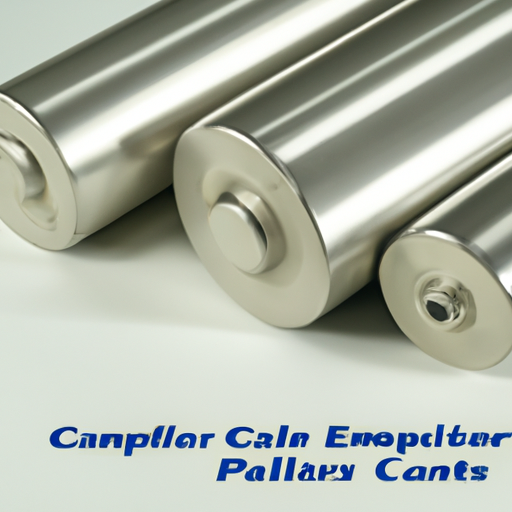
Aluminum electrolytic capacitors are a type of capacitor that uses an electrolyte to achieve a high capacitance in a small package. These capacitors are commonly used in electronic devices such as power supplies, audio equipment, and lighting fixtures. The production process for aluminum electrolytic capacitors involves several key steps to ensure the capacitors meet the required specifications and performance standards.The common production processes for aluminum electrolytic capacitors include:1. Aluminum foil production: The first step in the production of aluminum electrolytic capacitors is the production of high-quality aluminum foil. The aluminum foil is typically made from pure aluminum or an aluminum alloy and is rolled to a specific thickness. The foil is then treated with a surface treatment to improve its conductivity and adhesion to the electrolyte.2. Electrolyte preparation: The electrolyte used in aluminum electrolytic capacitors is typically a liquid or gel that contains a solvent, a conductive salt, and additives to improve the performance of the capacitor. The electrolyte is prepared in a controlled environment to ensure the purity and consistency of the final product.3. Anode formation: The next step in the production process is the formation of the anode, which is made from the aluminum foil. The aluminum foil is etched or treated with a chemical process to create a porous surface that increases the surface area of the anode. This increased surface area allows for a higher capacitance in a smaller package.4. Cathode formation: The cathode of an aluminum electrolytic capacitor is typically made from a conductive material such as graphite or carbon. The cathode is formed by coating the surface of the anode with a conductive material and then drying and curing the coating to ensure adhesion and conductivity.5. Winding and assembly: Once the anode and cathode are prepared, they are wound together with a separator material to create the capacitor element. The winding process is done carefully to ensure proper alignment and spacing of the anode and cathode layers. The capacitor element is then assembled into a case or housing and sealed to prevent contamination.6. Aging and testing: After assembly, the capacitors are aged to stabilize the electrical properties and ensure long-term reliability. The capacitors are subjected to various electrical tests to verify their capacitance, leakage current, and other performance parameters. Any capacitors that do not meet the required specifications are rejected.7. Marking and packaging: Once the capacitors have passed all tests, they are marked with the required information such as capacitance, voltage rating, and manufacturer's logo. The capacitors are then packaged in reels, trays, or tubes for shipment to customers.In conclusion, the production of aluminum electrolytic capacitors involves several key processes to ensure the capacitors meet the required specifications and performance standards. From aluminum foil production to aging and testing, each step in the production process is critical to the quality and reliability of the final product. By following strict quality control measures and using advanced manufacturing techniques, manufacturers can produce high-quality aluminum electrolytic capacitors for a wide range of electronic applications.
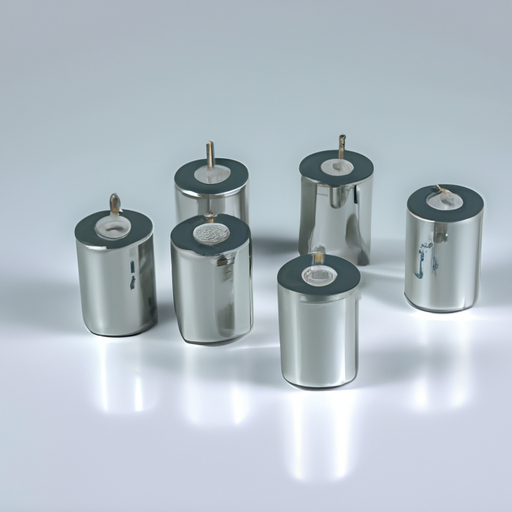
Aluminum electrolytic capacitors are a type of capacitor that is widely used in various electronic devices and systems. They offer several advantages that make them a popular choice for many applications. In this article, we will discuss the advantages of aluminum electrolytic capacitors and why they are preferred over other types of capacitors.One of the main advantages of aluminum electrolytic capacitors is their high capacitance. These capacitors have a high capacitance per unit volume, which means they can store a large amount of charge in a relatively small package. This makes them ideal for applications where space is limited, such as in portable electronic devices or compact electronic systems.Another advantage of aluminum electrolytic capacitors is their high voltage rating. These capacitors can handle high voltages, making them suitable for use in high-power applications. They are commonly used in power supplies, motor drives, and other applications where high voltage levels are present.Aluminum electrolytic capacitors also have a long lifespan. When properly used and maintained, these capacitors can last for many years without losing their capacitance or performance. This makes them a reliable choice for applications where long-term reliability is important.In addition to their high capacitance, voltage rating, and long lifespan, aluminum electrolytic capacitors also have a low equivalent series resistance (ESR). ESR is a measure of the internal resistance of a capacitor, and a lower ESR value indicates better performance. Aluminum electrolytic capacitors have a low ESR, which means they can deliver high currents with low losses, making them suitable for high-power applications.Furthermore, aluminum electrolytic capacitors are cost-effective compared to other types of capacitors. They are relatively inexpensive to manufacture and are widely available from various manufacturers. This makes them a cost-effective choice for many applications where budget constraints are a concern.Another advantage of aluminum electrolytic capacitors is their wide operating temperature range. These capacitors can operate in a wide range of temperatures, from -40°C to 105°C or even higher, depending on the specific model. This makes them suitable for use in harsh environments where temperature fluctuations are common.Aluminum electrolytic capacitors are also easy to install and replace. They are available in a variety of sizes and form factors, making them easy to integrate into different electronic systems. In addition, they are typically designed with standardized mounting options, making them easy to replace when needed.Overall, aluminum electrolytic capacitors offer several advantages that make them a popular choice for many electronic applications. Their high capacitance, voltage rating, long lifespan, low ESR, cost-effectiveness, wide operating temperature range, and ease of installation and replacement make them a versatile and reliable choice for a wide range of applications.In conclusion, aluminum electrolytic capacitors are a preferred choice for many electronic applications due to their numerous advantages. Their high capacitance, voltage rating, long lifespan, low ESR, cost-effectiveness, wide operating temperature range, and ease of installation and replacement make them a versatile and reliable option for various electronic systems. Whether used in power supplies, motor drives, or other high-power applications, aluminum electrolytic capacitors offer the performance and reliability needed for today's electronic devices and systems.